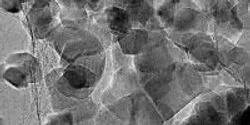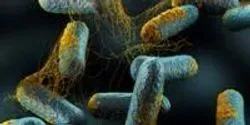All by Argonne National Laboratory
Filter by
AllArticlesAudioEbooksEventsInfographicsNewsProductsSurveysDocumentsVideosVirtual EventsWebinars
Researchers at the US Department of Energy’s (DOE) Argonne National Laboratory have created a small scale “hydrogen generator” that uses light and a two-dimensional graphene platform to boost production of the hard-to-make element.

By levitating a bead of ceramic oxide, heating it with a 400-watt carbon dioxide laser, then shooting the molten material with X-rays and neutrons, scientists with the U.S. Department of Energy's Oak Ridge and Argonne national laboratories have revealed unprecedented detail of the structure of high-temperature liquid oxides.

Ferroelectric materials–substances in which there is a slight and reversible shift of positive and negative charges–have surfaces that are coated with electrical charges like roads covered in snow. Accumulations can obscure lane markings, making everyone unsure which direction traffic ought to flow; in the case of ferroelectrics, these accumulations are other charges that “screen” the true polarization of different regions of the material.












